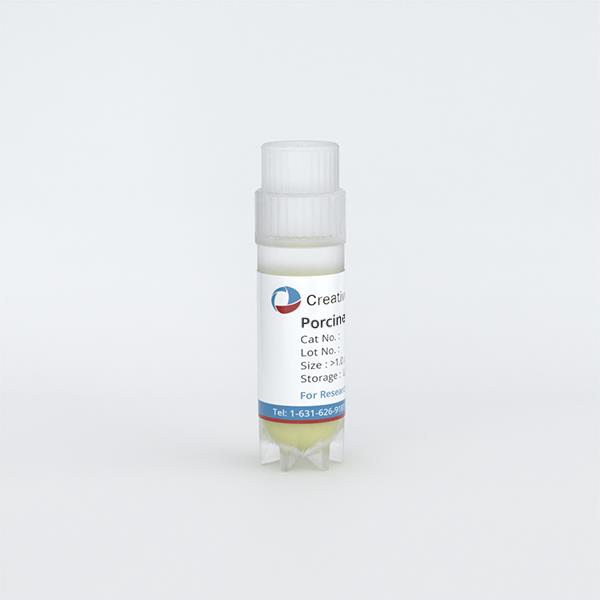Description
Porcine Vein Endothelial Cells from Creative Bioarray are isolated from inferior vena cava tissue of porcine. Porcine Vein Endothelial Cells are grown in T25 tissue culture flasks pre-coated with gelatin-based coating solution for 2 min and incubated in Creative Bioarray’ Culture Complete Growth Medium generally for 3-7 days. Cultures are then expanded. Prior to shipping, cells are detached from flasks and immediately cryo-preserved in vials. Each vial contains at least 0.5x10^6 cells per ml and are delivered frozen. The method we use to isolate endothelial cells was developed based on a combination of established and our proprietary methods. These cells are pre-coated with PECAM-1 antibody, following the application of magnetic pre-coated with secondary antibody.
Recommended Medium
Porcine Endothelial Cell Medium
Cell Type
Endothelial Cell
Quality Control
Porcine Vein Endothelial Cells are tested for uptake of Dil-Ac-LDL (Catalog No. L-35353, Invitrogen), a functional marker for endothelial cells. Porcine Vein Endothelial Cells are negative for bacteria, yeast, fungi and mycoplasma. Cells can be expanded for 3-5 passages at a split ratio of 1:2 under the cell culture conditions specified by Creative Bioarray. Repeated freezing and thawing of cells is not recommended.
Storage and Shipping
Creative Bioarray ships frozen cells on dry ice. On receipt, immediately transfer frozen cells to liquid nitrogen (-180 °C) until ready for experimental use. Live cell shipment is also available on request.
Never can primary cells be kept at -20 °C.
Citation Guidance
If you use this products in your scientific publication, it should be cited in the publication as: Creative Bioarray cat no.
If your paper has been published, please click here to submit the PubMed ID of your paper to get a coupon.
How do you handle cells that have been shipped over long distances filled with culture solution?
The cells were first placed in a 37℃ incubator for 4 hours so that they could be stabilized after a long journey and the cell state could be observed. Dilute the fresh medium 1:1 with the old medium. If the cells are not in good condition, the serum concentration can be increased to 15%, otherwise the cells will be cultured normally, so that there will be a transition period and the cells will not be in bad condition after the change of serum, and the 15% serum will be cultured for 48 h, then the cells will be cultured with the normal concentration.


